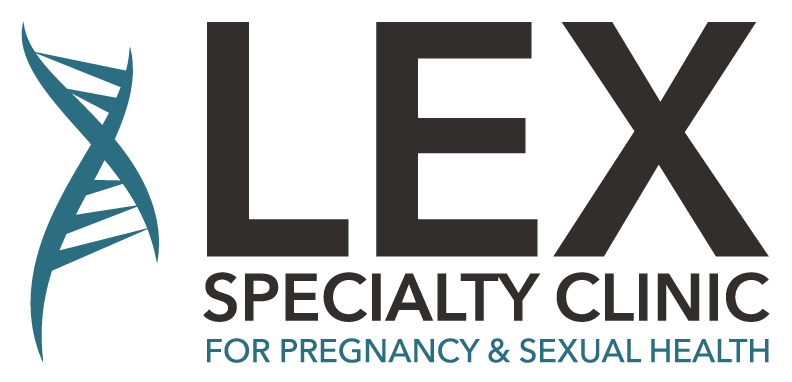If you’ve recently found out you’re pregnant and it wasn’t part of your plan, you may be looking into your options—including abortion.
Before contacting an abortion clinic, it’s helpful to understand the different procedures, when they’re performed, and what risks or side effects may occur.
Having this information can help you make a confident, informed decision. Keep reading to learn more about first-trimester and second-trimester abortion procedures—and what you can expect from each.
First-Trimester Abortion Procedures
The first trimester includes the time from conception through week 13. During this stage, two common options are available: medical abortion and dilation and curettage (D&C).
What Is a Medical Abortion?
Also known as the abortion pill, a medical abortion involves taking two medications: mifepristone and misoprostol. This method is FDA-approved for pregnancies up to 10 weeks.[1]
- Mifepristone blocks the hormone progesterone, preventing the pregnancy from developing.
- Misoprostol, taken 24–48 hours later at home, causes cramping to expel the pregnancy.[2]
Bleeding and cramping typically begin within 2 to 24 hours after taking misoprostol.[3] Most women pass the pregnancy during that time.[4][5]
The experience often resembles a heavy period, though it varies by person. Recovery usually includes rest, over-the-counter pain relief, and possibly a follow-up visit if symptoms persist.
What Is a Dilation and Curettage (D&C)?
A D&C, also known as vacuum aspiration, is a short surgical abortion offered up to 13 weeks.[6] The procedure typically takes less than 30 minutes.
Before the procedure, medication or instruments are used to gently open the cervix. Misoprostol may be used to soften it.[7]
The provider removes the pregnancy tissue using suction and a small surgical tool called a curette.[8]
Second-Trimester Abortion Procedures
The second trimester covers weeks 13 to 27. At this stage, a procedure called dilation and evacuation (D&E) is typically recommended due to the pregnancy’s further development.
What Is a Dilation and Evacuation (D&E)?
A D&E is a more complex surgical abortion generally performed in the second trimester.[9] It requires experienced providers due to the pregnancy’s advanced development.
What to expect:
- Cervix Dilation: The day before, laminaria sticks or medication may be used to slowly open the cervix.[10]
- Procedure: A cannula is used to suction out the contents of the uterus, and forceps may be used to remove any remaining tissue.[11]
The procedure lasts 10 to 30 minutes and is performed under anesthesia. Cramping and bleeding may continue for up to two weeks. A follow-up visit ensures everything has resolved properly.
Risks and Side Effects of Abortion
Every medical procedure has risks. Here’s what to be aware of for both medical and surgical abortions.
Medical Abortion: Common Side Effects & Risks
After a medical abortion, bleeding or spotting often continues for 9–16 days and sometimes up to 30 days.[12]
Common side effects:[13]
- Cramping
- Headaches
- Nausea or vomiting
- Diarrhea or digestive issues
- Chills or mild fever
Serious risks include:
- Hemorrhaging: Bleeding that soaks two pads per hour for more than two hours.[14]
- Incomplete Abortion: Retained tissue may require surgical removal.[15]
- Infection: Persistent fever or nausea more than 24 hours after misoprostol may signal infection.[16]
Surgical Abortion: Common Side Effects & Risks
Both D&C and D&E procedures are generally safe but may include the following risks:
- Uterine Perforation: An instrument may puncture the uterus.[17]
- Asherman Syndrome: Scar tissue may form in the uterus after repeated procedures.[18]
- Pelvic Inflammatory Disease (PID): Bacteria introduced during the procedure may cause infection.[19]
- Intense Pain: Especially during second-trimester procedures like D&E.[20]
Have Questions About Abortion in East Central, Minnesota? Get the Facts at Lex Specialty Clinic
If you’re exploring abortion, you don’t have to go through it alone. The caring team at Lex Specialty Clinic is here to offer confidential guidance and support—at no cost to you.
Call us at (763) 689-4319 or schedule your appointment online today.
Please be aware that Lex Specialty Clinic does not provide or refer for abortion services.
Sources
- FDA. (2025, February 11). Questions and Answers on Mifepristone for Medical Termination of Pregnancy Through Ten Weeks Gestation. https://www.fda.gov/drugs/postmarket-drug-safety-information-patients-and-providers/questions-and-answers-mifepristone-medical-termination-pregnancy-through-ten-weeks-gestation?sm_guid=…
- See source #1.
- See source #1.
- U.S. National Library of Medicine. (2024, November 15). Mifepristone (Mifeprex). MedlinePlus. https://medlineplus.gov/druginfo/meds/a600042.html
- Mifepristone (oral route). Mayo Clinic. (2025, February 1). https://www.mayoclinic.org/drugs-supplements/mifepristone-oral-route/description/drg-20067123
- Cleveland Clinic. (2024, February 9). Dilation and Curettage (D & C). https://my.clevelandclinic.org/health/procedures/dilation-and-curettage
- Mayo Clinic. (2023, November 7). Dilation and curettage (D&C). https://www.mayoclinic.org/tests-procedures/dilation-and-curettage/about/pac-20384910
- See source #7.
- Understanding Dilation and Evacuation (D&E). Saint Luke’s Health System. (n.d.). https://www.saintlukeskc.org/health-library/understanding-dilation-and-evacuation-de
- See source #9.
- See source #9.
- See source #4.
- See source #4.
- Danco Laboratories, LLC & FDA. (2016, March). Mifeprex Label. FDA. https://www.accessdata.fda.gov/drugsatfda_docs/label/2016/020687s020lbl.pdf
- Mayo Clinic. (2022, July 29). Medical Abortion. https://www.mayoclinic.org/tests-procedures/medical-abortion/about/pac-20394687
- See source #4.
- U.S. National Library of Medicine. (2024, April 5). Abortion – Surgical. MedlinePlus. https://medlineplus.gov/ency/article/002912.htm
- Mayo Clinic. (2024, July 6). Elective Abortion: Does it Affect Subsequent Pregnancies? https://www.mayoclinic.org/healthy-lifestyle/getting-pregnant/expert-answers/abortion/faq-20058551
- Mayo Clinic. (2022, April 30). Pelvic Inflammatory Disease (PID). https://www.mayoclinic.org/diseases-conditions/pelvic-inflammatory-disease/symptoms-causes/syc-20352594
- Dzuba, I. G., Chandrasekaran, S., Fix, L., Blanchard, K., & King, E. (2022, May 12). Pain, Side Effects, and Abortion Experience Among People Seeking Abortion Care in the Second Trimester. Women’s Health Reports (New Rochelle, N.Y.). https://www.ncbi.nlm.nih.gov/pmc/articles/PMC9148646/

